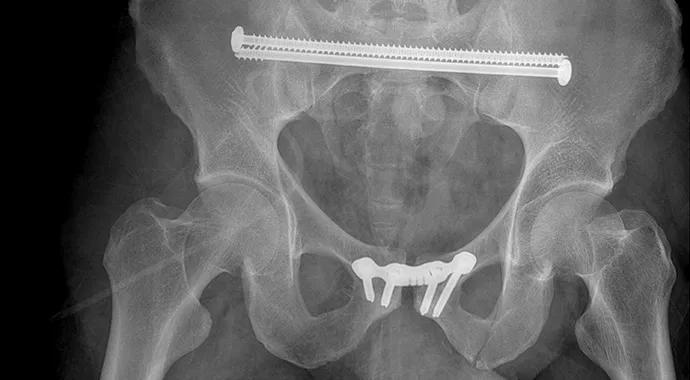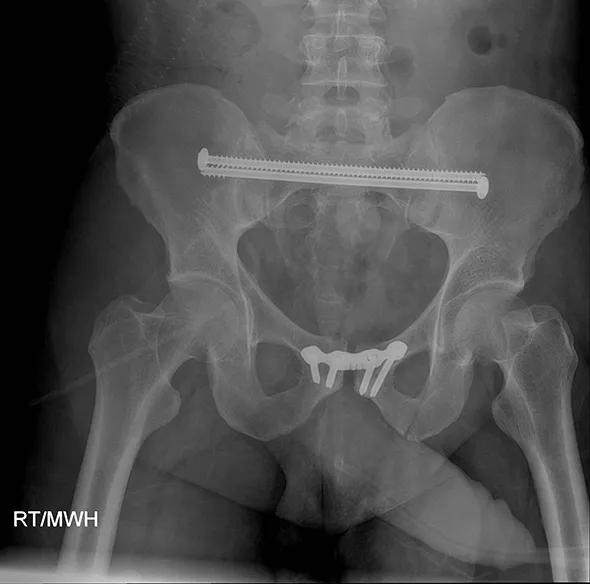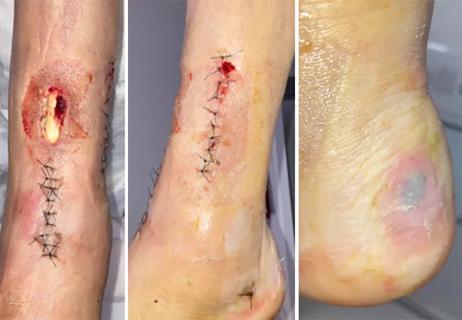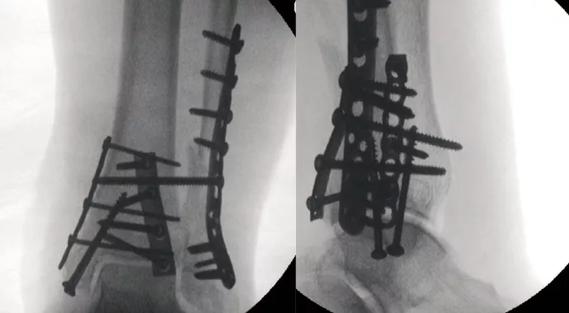Advertisement
Specialized trauma expertise can yield lifesaving payoffs

Advertisement
Cleveland Clinic is a non-profit academic medical center. Advertising on our site helps support our mission. We do not endorse non-Cleveland Clinic products or services. Policy
Pelvic ring injuries may be among the most important injuries that orthopaedic surgeons manage due to the associated risk of death and potential lifelong morbidity. Pelvic ring injuries are usually secondary to high-energy mechanisms, such as motor vehicle collisions or falls from significant heights. In view of the high-energy mechanism required to sustain these injuries, clinicians should routinely consider clearance of the head, chest and abdomen by the emergency department or trauma service, as associated injuries are common. Pelvic ring injuries can cause life-threatening hemorrhage, leading to hemodynamic instability requiring significant blood transfusions. Advanced Trauma Life Support protocol should be followed, beginning with the primary survey and the ABC mnemonic.
After primary and secondary surveys are complete, every work-up for a patient involved in a high-energy trauma should include an anteroposterior radiograph of the pelvis (Figure 1). Physical examination and a single radiograph can diagnose an unstable pelvic ring injury and guide patient care.

Figure 1. Anteroposterior pelvis injury film
A patient with hemodynamic instability and a significantly displaced pelvic ring should be placed in a sheet to help control pelvic volume and aid in hemodynamic resuscitation. Two individuals should place the sheet around both greater trochanters, and the sheet should be smooth and without wrinkles to avoid any soft-tissue compromise. It is held in place with multiple clamps (Figure 2). If hemodynamic instability persists, the patient may require angiography and selective embolization.

Figure 2. Anteroposterior pelvis view after binder application
After the patient is stabilized, further imaging studies should be obtained. These include a CT with fine cuts of the pelvis as well as inlet and outlet radiographs of the pelvis. Pelvic ring disruptions are assessed by their anterior and posterior ring injuries. Instability of the anterior ring includes symphysis disruption and rami fractures, while instability of the posterior ring includes complete disruption of the sacroiliac joints or complete fracture through the sacrum. If a pelvic ring is deemed unstable, surgery should be considered. Complete sacral fractures with associated rami fractures that are treated nonoperatively have been shown to have a higher likelihood of future displacement of more than 5 mm compared with incomplete sacral fractures that are treated nonoperatively.
Advertisement
Surgical treatment has been recommended for sacral fractures displaced more than 10 mm, with less than 5 mm being considered a satisfactory reduction. Surgical treatment is aimed at deformity correction and pain relief. Surgical treatment of the anterior ring injury can consist of plating of the symphysis, retrograde percutaneous screw fixation of the rami or placement of an external fixator. The posterior ring can be stabilized in a variety of ways, including with open plating or with iliosacral screw fixation, either after open reduction or percutaneously after closed reduction. Percutaneous iliosacral screw fixation of the posterior pelvis has been a significant advancement in orthopaedic trauma care. The operation is performed using quality fluoroscopic imaging of a well-reduced pelvis. Images consist of inlet, outlet and lateral views of the pelvis. These images, together with knowledge of pelvic anatomy, allow for safe placement of the screws, although care must be taken not to injure the L5 nerve root on the anterior sacrum and the S1 nerve root as it courses through the nerve root tunnel. Better reductions, and thus safer screw placement, are obtained when surgery is performed earlier rather than later. Cannulated screws 7.3 mm or 7.0 mm in size are placed through a small lateral incision. Screws should be long enough to allow screw threads to penetrate the sacral body for better pullout strength (Figure 3).

Figure 3. Postoperative anteroposterior pelvis view
Postoperatively, patients are managed with protected weight bearing for eight to 12 weeks, depending on whether they had a bony injury or ligamentous pelvic ring injury.
Pelvic ring injuries are among the conditions for which specialized traumatology expertise can yield important—sometimes lifesaving—payoffs for patients. Cleveland Clinic is pleased to be expanding its orthopaedic trauma services at Hillcrest Hospital, a Cleveland Clinic community hospital that is part of the Northern Ohio Regional Trauma Network.
Dr. Billow (billowd@ccf.org) is a traumatologist in the Department of Orthopaedic Surgery.
Advertisement
Advertisement

Trauma patients present with infected pilon and distal femur fractures

Team effort brought happy ending to 15-year-old boy

Good preoperative care is essential to success

This rare disease usually manifests as a firm, painless mass that is growing

Gamers are athletes who can benefit from athletic training

More report a clinically meaningful change in function at 90 days compared to patients with lower BMI

Patient climbs Mount Kilimanjaro 8 months after surgery

A behind-the-scenes look at Cleveland Clinic’s role as medical services provider of the 2023 Summer Series